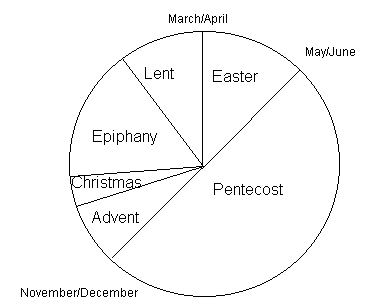
The Christian Church Year

Good Shepherd Lutheran Church
Collinsville, Illinois
July 1998
Jesus is the long awaited Messiah (Christ) or "anointed one" which God had promised to come from Israel. Jesus fulfilled the requirements of the Law which were a shadow of the Christ to come. All the observances of the Law were either completed by Christ (such as animal sacrifices for sins) or adjusted to focus on Christ (such as the Sabbath). The latter adjustment of the Sabbath to a new focus on Jesus is the heart of the Christian calendar, and it provides the transition from the observances of the old covenant to the new covenant.
In Acts 20.7 and 1 Corinthians 16.2, we notice the shift made by Jewish believers in Christ:
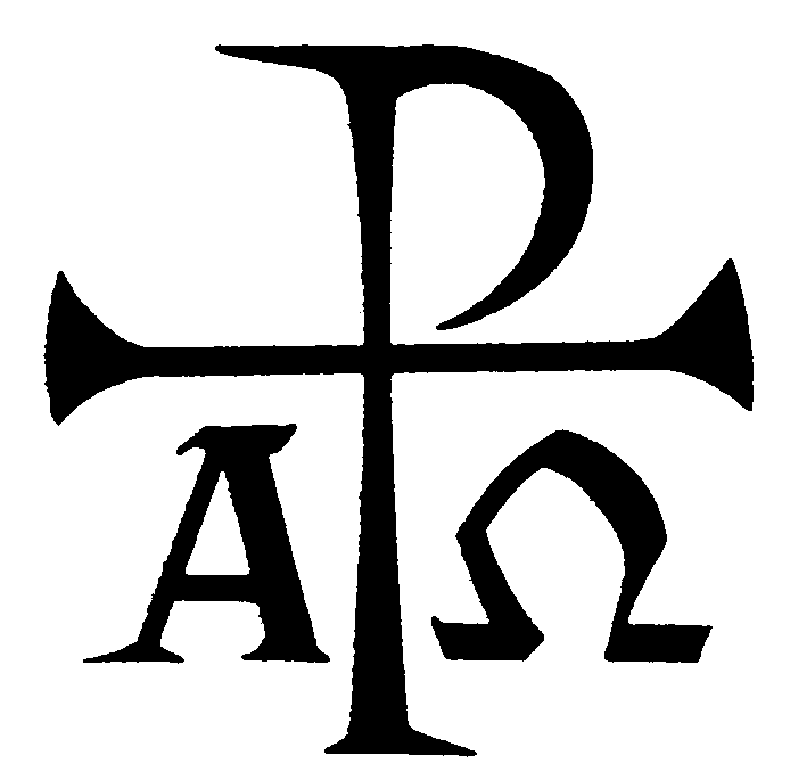
(Acts 20:7) Now on the first day of the week, when the disciples came together to break bread, Paul, ready to depart the next day, spoke to them and continued his message until midnight.
(1 Corinthians 16:2) On the first day of the week let each one of you lay something aside, storing up as he may prosper, that there be no collections when I come.
These early Christians began to worship on the first day of the week (Sunday) instead of the seventh day of the week (Saturday) which was the traditional Jewish Sabbath. In the Revelation 1.10 the first day of the week is even called "the Lordís Day." This day was important because this was the day when Jesus rose from the dead. It is also important because it is the first day of creation. It is the day when the Holy Spirit was poured out on the disciples after Jesus had ascended into heaven. So the early Christians continued the weekly spiritual observance of the Sabbath, but they moved it to Sunday to reflect the new focus which was on Jesus. In a sense every Sunday is a celebration of the resurrection of Jesus.
Other times of Christian celebration were then added slowly to this weekly celebration. The church year didnít come about all at once. None of the following observances are commanded by Scripture. Rather they represent the way in which Christians from the past have tried to keep in mind the important events in Jesusí life and the doctrine of the Apostles and Prophets.

The first event which was given special recognition was Easter or the Festival of Resurrection. Christians wanted to make this celebration significant since it is the most important miracle of the Bible. Holy Week was added next to recognize the important teachings and events that took place just before the crucifixion of Jesus. The date of the celebration of Easter is arbitrarily determined by the first Sunday following the first full moon on or after the spring equinox. Easter usually falls somewhere between the middle of March to the middle of April. Holy Week celebrations usually include Palm Sunday, celebrating Christís triumphal entry into Jerusalem; Maundy Thursday, celebrating the Lordís Supper; and Good Friday, recognizing the passion and death of Jesus.
Next, another period of forty days was added as a time of preparation leading up to the Festival of the Resurrection. The number forty is significant since Jesus was tempted for forty days in the wilderness and Israel wandered for forty years in the desert. Sundays are not counted among the forty days since they always celebrate the resurrection. The Anglo Saxon word for "Spring" was used by some Christians to name this period of preparation. From this we have derived the word "Lent." The season of Lent became a time when the church especially focused on the study of basic doctrines in the catechism. It also was a time of penitence often marked by abstinence from certain foods and celebrations. Ash Wednesday is the beginning of the forty days of Lent. Churches will use the color of purple to highlight this season of the Church Year.
A far more important period of time is the fifty days that follow Easter. This is the period of time from the resurrection to the outpouring the Holy Spirit at the Jewish Festival of Pentecost. Within this season the church also remembers the Ascension of Jesus which took place forty days after the resurrection. During this season a special large candle called the Paschal Candle is lit during every worship service. After this season the Paschal Candle is lit only for baptisms.
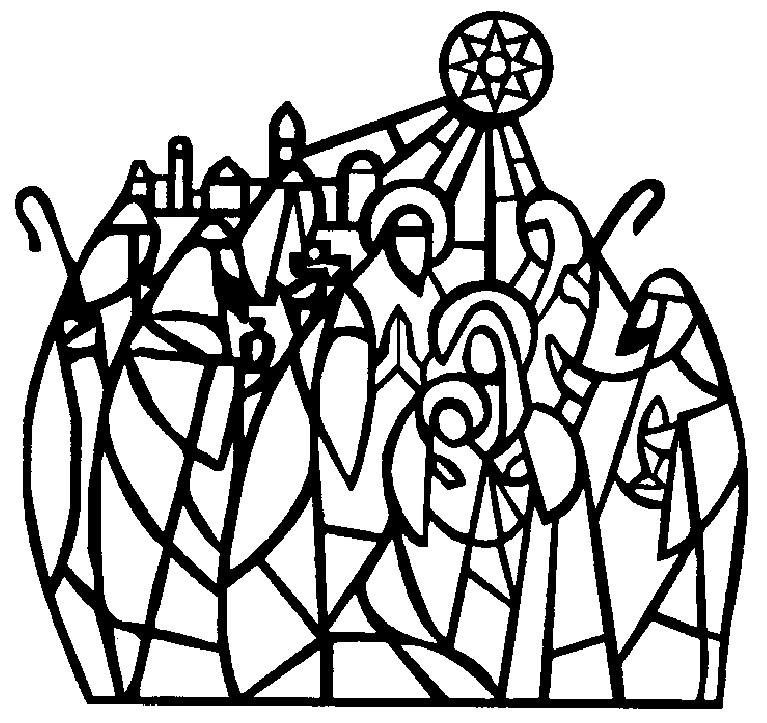
Before moving forward to the Season of Pentecost, we look back to the three seasons which precede Lent. These are called Advent, Christmas, and Epiphany. Some Christians thought that Jesus was conceived on the day of His death which was thought to be April 6. This would make His date of birth January 6. This early celebration of Christís birth was called Epiphany ("to manifest"). Actually Epiphany celebrated not only the birth of Christ but also His circumcision, baptism, and His first miracle at the Wedding of Canna. Later Christians separated the birth of Christ from Epiphany by celebrating Christmas on December 25. Epiphany was still celebrated, and it especially emphasized the visit of the Magi. The time from December 25 to January 6 is often called the "Twelve Days of Christmas."
Gradually the Christian church marked off important Sundays which came before Christmas (December 25) and after Epiphany (January 6). The four Sundays preceding Christmas were called Advent. During these Sundays the Church emphasized the coming of Christ--both the Second Coming on Judgment Day and the first coming of Jesus at Bethlehem. The traditional colors for Advent are blue or purple. The Christmas season marked by white only lasts for two Sundays. The Epiphany season falls between Christmas and Lent and may have as many as nine Sundays depending on the date of Easter (and hence the beginning of Lent). The last Sunday of Epiphany is Transfiguration Sunday. This Sunday celebrates one of the most significant manifestations of Jesus when Peter, James, and John saw Jesus transfigured in all His divine glory. The colors for Epiphany are white and green.
These five seasons (Advent, Christmas, Epiphany, Lent, and Easter) make up one half of the Church Year. These span the months of December to May. During this half of the year the emphasis falls upon the important events in the life of Jesus (Birth, Visit of the Wisemen, Transfiguration, Death, Resurrection, and Ascension etc.).
The next half of the Church Year is especially devoted to the teachings of Jesus and the growth of the Christian Church. This season is called Pentecost. It begins with the celebration of Pentecost fifty days after the resurrection of Jesus. This season usually spans from May or June until the end of November. Important celebrations during this season are Trinity (the Sunday after Pentecost), Reformation (October 31) and All Saints (November 1). Green usually marks the Sundays in Pentecost, however red is used for the Day of Pentecost, Reformation, and other special Sundays.
During the entire Church Year there are special days devoted to the Apostles, Evangelists, and other festivals commemorating for example the birth of John the Baptist or the Presentation of Jesus in the Temple. Special days for Saints are also observed in some churches. In the past these were called "Holy Days." After the Reformation many Lutheran churches curtailed their emphasis of many of these "saints days" because of old abuses. Churches are free to observe them as they may edify the congregation. Lutheran churches commend to their congregations the examples of the saints while retaining a greater emphasis upon Christ and the Gospel. Below are listed some of these other special commemorations:
November 30 St. Andrew, Apostle
December 21 St. Thomas, Apostle
December 26 St. Stephen, The First Martyr
December 27 St. John, Apostle and Evangelist
December 28 The Holy Innocents, Martyrs
December 31 New Yearís Eve, the Eve of the Name of Jesus
January 1 New Yearís Day, the Circumcision of Jesus
January 18 St. Timothy, Pastor and Confessor
January 25 The Conversion of St. Paul
January 26 St. Titus, Pastor and Confessor
February 2 The Presentation of Our Lord
February 18 Martin Luther, Doctor and Confessor
February 24 St. Matthias, Apostle
March 25 The Annunciation of Our Lord
April 25 St. Mark, Evangelist
May 1 St. Philip and St. James, Apostles
May 7 C.F.W. Walther, Doctor
May 31 The Visitation
June 11 St. Barnabus, Apostle
June 24 The Nativity of St. John the Baptist
June 25 The Presentation of the Augsburg Confession
June 29 St. Peter and St. Paul, Apostles
July 22 St. Mary Magdalene
July 25 St. James the Elder, Apostle
August 10 St. Laurence, Martyr
August 15 St. Mary, Mother of Our Lord
August 24 St. Bartholomew, Apostle
September 14 Holy Cross Day
September 29 St. Michael and All Angels
October 18 St. Luke, Evangelist
October 28 St. Simon and St. Jude, Apostles
October 31 Reformation Day
November 1 All Saintsí Day
November 2 Commemoration of the Faithful Departed
Various Symbols of
the Christian Church
and Their Meanings
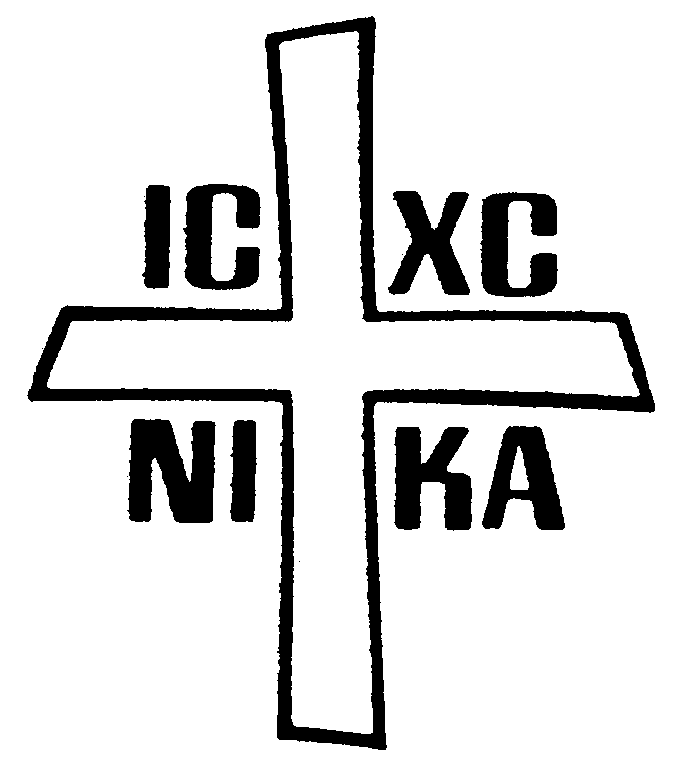
Many symbols employ Greek letters. In the four corners of this cross (beginning with in the upper left and moving right) are the first and last Greek letters of the words for JESUS, CHRIST, VICTOR, DEATH.
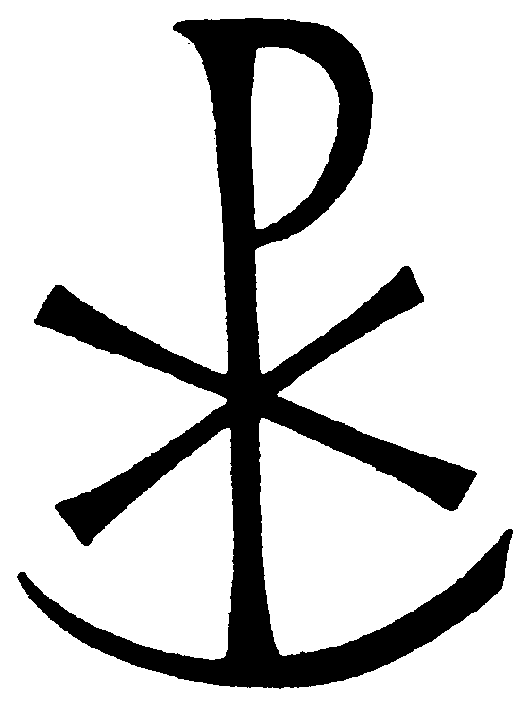
The Chi Rho is a combination of two Greek letters
C (Chi) and R (Rho). These are the first two letters of the word "Christ." This particular symbol also uses the form of an anchor at the bottom. The anchor is often used as a symbol of hope. Hence "Christ is our Hope."

These are the first three Greek letters of the name "Jesus." They are often used in Christian symbols. Sometimes the "S" is written as a "C" because the Greek capital letter for "s" is "C."
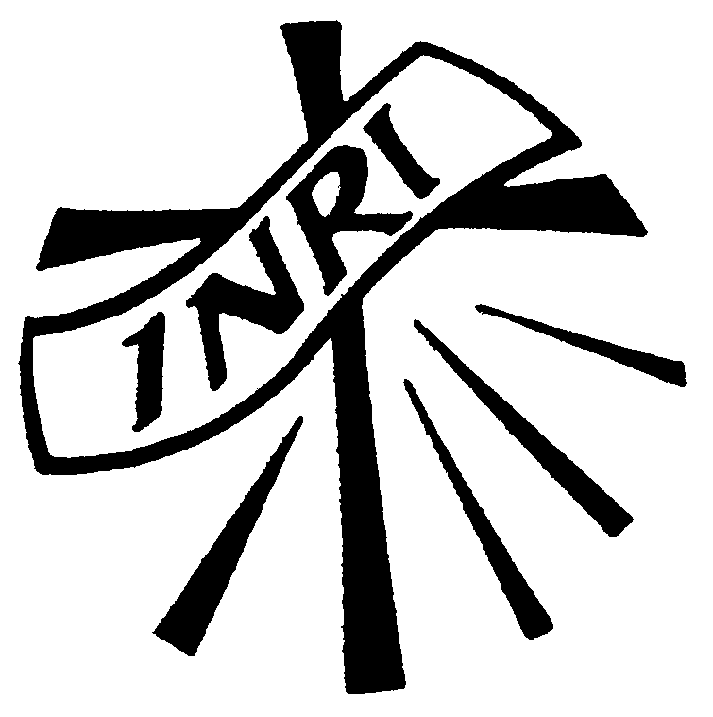
In John 19.19 we read that Pontius Pilate placed a sign above Jesus on the cross which read "Jesus of Nazareth, King of the Jews." It was written in Hebrew, Greek and Latin. The letters "I,N,R,I" are the first letters of the Latin words, "Jesus, Nazareth, King, Jews."
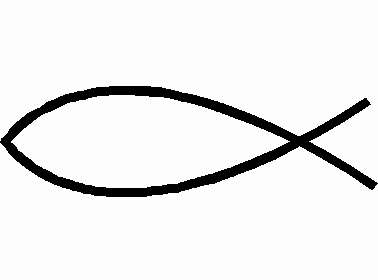
The secret symbol of the fish was used by early persecuted Christians to designate themselves as believers in Jesus. The letters of the word "fish" (I, CH, TH, U, S) in Greek are the first letters of the words, "Jesus, Christ, Godís Son, Savior."

The Triquetra was an early symbol of the Trinity (the three persons of the Godhead, Father, Son, and Holy Spirit). The three equal arcs express eternity in their continuous form, and their center is a triangle, ancient Trinity symbol.
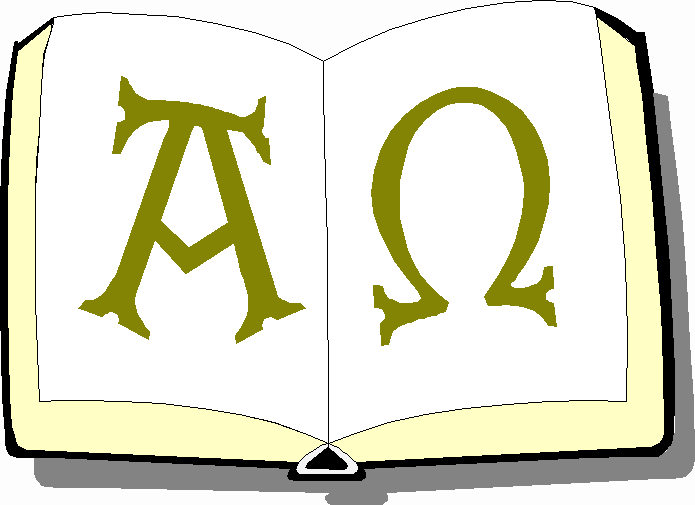
The Alpha and Omega are the first and last letters of the Greek alphabet. Jesus calls Himself the Alpha and the Omega, the Beginning and the End, four times in the Book of Revelation.

There are many different kinds of crosses in Christian tradition. This is the Eastern Cross. The upper horizontal arm represents the inscription over the head of the crucified Jesus. The lower, slanting arm represents the footrest. (This cross can be seen as you drive on Hwy 157 North to Edwardsville. Just as you pass over I 270 look to your right to the Eastern Orthodox Cemetery.)

The Dove expresses innocence and purity. It signifies the Holy Spirit and the presence of God as hovering over the water at Creation, and above Jesus at His baptism. The symbol will often include the three-rayed nimbus indicating divinity.
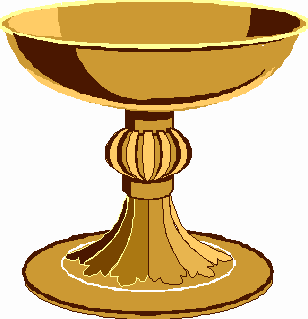
The chalice is a traditional symbol of the Lordís Supper reminding us of the cup which Jesus shared with His disciples in the Last Supper. This cup, Jesus said, carried His blood of the new covenant for the remission of sins. Today many churches use individual cups for convenience in administering the Lordís Supper.
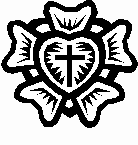
Lutherís Rose, Seal, or Coat of Arms symbolizes the Christian life. The black cross is in the heart because it is with the heart that man believes unto righteousness. The heart is fixed upon a white rose to show that faith gives us true joy and peace. The rose is set in a blue background to remind us of the hope of eternal life.

The Jerusalem or Crusaderís Cross usually has four small crosses between the arms, the five crosses symbolizing the five wounds of our Lord. This cross was worn by Godfrey de Bouillon, first ruller of Jersusalem after the liberation from the Moslems.
| HOME | BACK TO EDUCATION PAGE | BACK TO OUR FAITH PAGE |